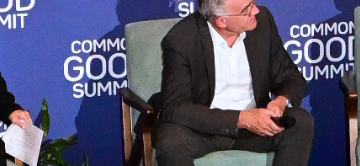IT IS widely agreed that worldwide deforestation is bad for the environment. It is responsible for about 10% of climate-change emissions and leads to massive reductions in biodiversity. The shrinkage of the Amazonian rainforest—the most well-known example of deforestation—reached a peak of 2.8 million hectares in 2004, an area almost the size of Belgium.
How can we protect forests? One option is direct regulation: in other words the placement of restrictions on road building or the establishment of protected areas. Another option is to impose a fine or tax on forest clearing. Governments can also pay landowners to conserve their forest under a “payment for ecosystem services” (PES) contract. It might even be possible to let forest owners trade-avoided emissions on a worldwide carbon market, so that forest owners are paid by those burn fossil fuels to protect their trees. For sure, there is no shortage of policy options, but what we desperately need is more evidence on how these policies perform in practice.
It is extremely difficult to measure the success of such policies. For example, after Brazil tightened regulation and introduced satellite monitoring in the mid-2000s, deforestation slowed to about half a million hectares annually. At the same time, lower prices for soybeans and cattle products reduced incentives to clear land. So what was the main factor behind the slowdown? How much forest did the government actually save?
Evaluating the impact of subsidies is equally problematic. Studies of programs in Mexico, Costa Rica and Brazil suggest that PES contracts can halve deforestation rates. They also appear to be much cheaper than, say, establishing protected areas on private land. However, PES subsidies can also waste public money by paying farmers for practices that they would have adopted anyway. After all, farmers who stand to profit the least from cutting down trees are the most likely to sign up for the programme.
Another challenge is identifying “leakage” effects. Some conservation policies, which may be successful locally, can trigger deforestation elsewhere. For example, a farmer may stop clearing forest on plots contracted under a PES programme while increasing deforestation on land not covered by the contract. On a larger scale, the threat of provincial government fines may induce farmers or logging firms to move operations to a neighbouring province.
The gold-standard method of evaluating conservation policies is the systematic use of randomised-controlled trials (RCTs), similar to those used to test pharmaceuticals. RCTs involve randomly selecting two groups of individuals or regions and implementing a policy only for one group, keeping the second as a control. The difference between the groups provides a direct measure of success. Such trials can also be designed to measure leakage. Few forestry policies have been tested in this way. Recently Kelsey Jack, an economist at Tufts University, performed an RCT to assess tree-planting subsidies in Malawi and Zambia, but to date there are no results elsewhere.
Economists predict that large-scale policies perform better and, as such, they are likely to play an important role at the upcoming COP21 climate conference in Paris. Taking a lead on the global scene, Norway has already agreed payments to Brazil and French Guiana if deforestation falls below a target rate[JS1] . This is promising, at least in principle, but first we need more evidence about which policies work on the ground. We therefore urge policymakers at the COP21 conference to set up a sizeable fund for conducting large RCTs. When practically feasible, RCTs are the most reliable guide to policy effectiveness that we have.
Saving the Amazon’s rainforest requires swift action, but state intervention that is not rigorously backed up by evidence may do much more harm than good.



